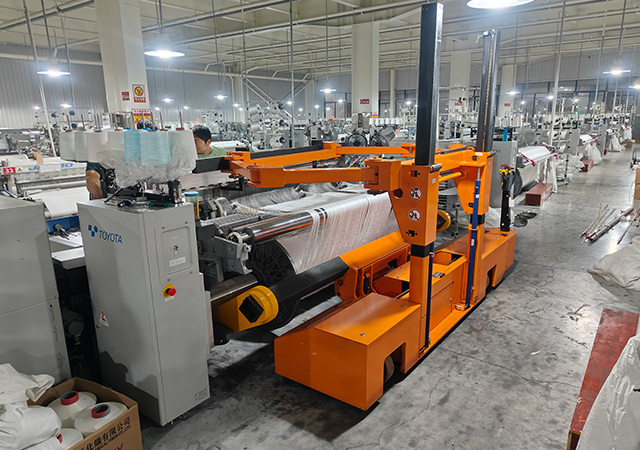The years 2022-2023 have witnessed a surge of advancements in textile machinery technology, particularly in China. These innovations have not only improved product quality but also introduced novel fiber types and structural products, making subtle yet impactful strides in the industry.
Diverse Approaches to Fiber Processing
One significant focus of recent textile process innovations in China has been on enhancing product quality. This has been achieved by applying non-cotton combed processes utilizing synthetic and multi-fiber combers. This unique approach involves the application of cotton combed processes to non-cotton fibers, leading to improved product quality. By employing combing techniques to eliminate hard, tangled fibers and impurities from synthetic raw materials, product quality is significantly enhanced. This results in improved yarn uniformity, fabric dyeing consistency, and overall quality. The development of multi-fiber combers, capable of addressing combing needs for various fibers like cotton, hemp, lyocell, viscose, ramie, and synthetic fibers, further underscores the commitment to innovation. These modular comber components can be combined to solve diverse fiber spinning challenges within a single comber machine, showcasing the versatility and adaptability of the technology.
Revolutionizing Spinning Processes
Semi-worsted weaving, an innovative approach that combines wool and cotton spinning technologies, has gained rapid traction. This approach creates a new spinning process model, enabling the fusion of natural fibers like cotton, wool, silk, and linen with modern chemical fibers. The outcome is a yarn that seamlessly blends various fibers, resulting in a fluffy, soft texture with advantages such as fine yarn counts, even strips, and lustrous fabric colors. The semi-worsted spinning process is a dynamic solution that caters to varied raw materials, aligning with the demand for diverse products, small batches, and personalized production. Notably, this process also offers enhanced production efficiency, streamlined processes, and reduced costs.
Elevating Ring Spinning Quality
Advancing the quality of ring-spun yarns has been a constant pursuit, and recent spinning technologies have unlocked new possibilities. Innovations like soft and smooth spinning technology have introduced devices that interact with the ring-spun yarn, imparting softness and smoothness through contact. This intervention reduces fiber stiffness, leading to reduced hairiness, improved yarn strength, and enhanced strip dryness. Another breakthrough, core binding spinning technology, combines chemical bonding with ring spinning techniques to enhance yarn strength while preserving the traditional feel of ring-spun fabrics. Multi-channel numerical control ring spinning, a fusion of electronic information technology and fine yarn machine characteristics, expands the scope of yarn product development. This technology allows for multi-element fiber feeding, ultimately enhancing the quality and variety of fancy yarns.
Expanding Possibilities in Textile Production
Beyond spinning, there's a focus on segmental colored yarns, utilizing fine yarn or parallel winding processes. The irregular distribution of combined colored fibers results in layered and three-dimensional color effects, adding substantial value to color spinning yarns. Computer color matching technology further streamlines color spinning yarn design and sampling processes, enhancing efficiency. Additionally, simulated knitted denim fabrics, woven using machine weaving techniques, offer softness, elasticity, and stability akin to woven denim fabrics. The patented technology for weaving graphene three-dimensional seamless down quilts exemplifies cost-saving solutions and opens avenues for new machine-woven home textile products.

Innovation Across Management and Operations
Textile management has not been left untouched by innovation. With the industrial technological revolution, management methods are evolving to optimize resource utilization. Computer-aided design technologies and modern enterprise systems are driving process and equipment management, facilitating Total Productive Maintenance (TPM) and refined management. Intelligent management systems, integrated with cutting-edge technologies like the Internet of Things and data mining, have resulted in highly connected, networked, and intelligent modern management systems. Lean management practices have matured, aligning production efficiency, cost, and quality. Furthermore, research and development have gained prominence, with textile enterprises investing in R&D institutions, innovation platforms, and industry-university-research collaborations to bolster core competitiveness.
Among the vanguard of textile machinery brands, SUNTECH Textile Machinery, has been driving innovation since 1970. With specialization in textile finishing machines and material handling equipment, SUNTECH has carved a niche with groundbreaking solutions like the AI Automated Fabric Inspection System (SThinkor) and the eco-conscious Electric Warp Beam Trolley Series (STelego). These innovations offer modern textile mills across the globe unparalleled opportunities for automation and sustainability, ushering in a new era of textile manufacturing excellence.
In Conclusion
The textile manufacturing industry is undergoing a profound evolution driven by technological innovation. From advancements in fiber processing to reimagining spinning techniques and embracing intelligent management systems, the landscape is evolving rapidly. As companies like SUNTECH Textile Machinery lead the charge with pioneering solutions, the horizon for textile manufacturing is bright with possibilities.




